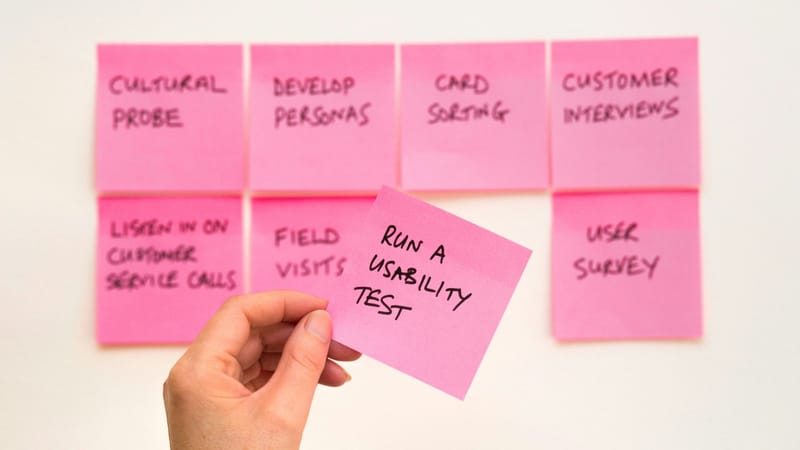How to Write a Strong Product Designer CV in the U.S.
Build a resume that blends creativity with measurable impact to land your next design opportunity.

You might think that submitting your CV or résumé is the easiest part of the job hunt—and in some cases, that’s true. But here’s what many people overlook: where you’re applying makes all the difference.
What works for a product designer in Europe or Asia might fall flat in the U.S., where recruiters are skimming through dozens of applications, looking for clarity, creativity, and results—all in under 30 seconds.
So, if you’re aiming to land a product design role in the U.S., remember this before you even start typing: design isn’t just about aesthetics—it’s about solving problems. Your CV should reflect that same mindset.
It needs to be clean, direct, and outcome-driven—showing just enough to spark curiosity without overwhelming the reader.
Here’s how to craft a product designer CV that not only looks good but also tells a compelling story of how you think, build, and impact.
7 Essentials Your CV Must Contain as a Product Designer Applying To U.S. Companies
1. Start with Your Contact Information
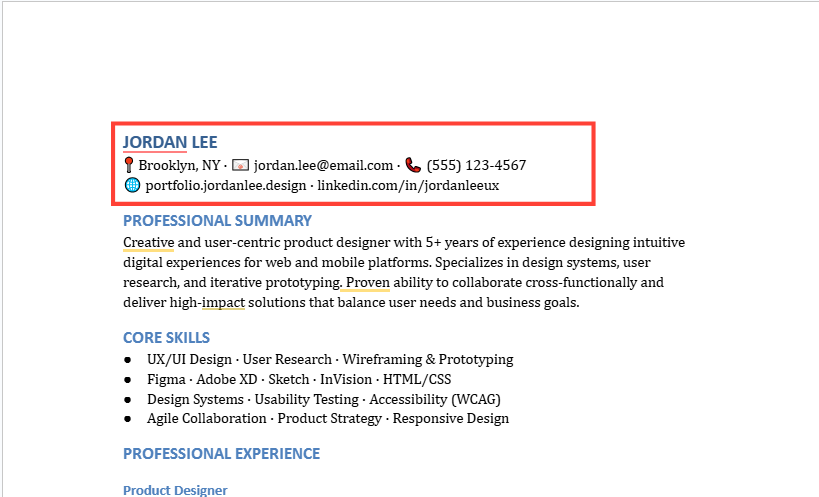
At the very top of your CV, include your name, email, phone number, portfolio link, and LinkedIn profile. Skip the fluff (no need for your full address or a photo), and make sure every link works—because if a recruiter clicks on your portfolio and gets a 404, that’s a red flag.
Pro tip: Use a custom portfolio URL if you have one. It adds a polished, intentional touch.
2. Write a One-Two Punch of a Summary
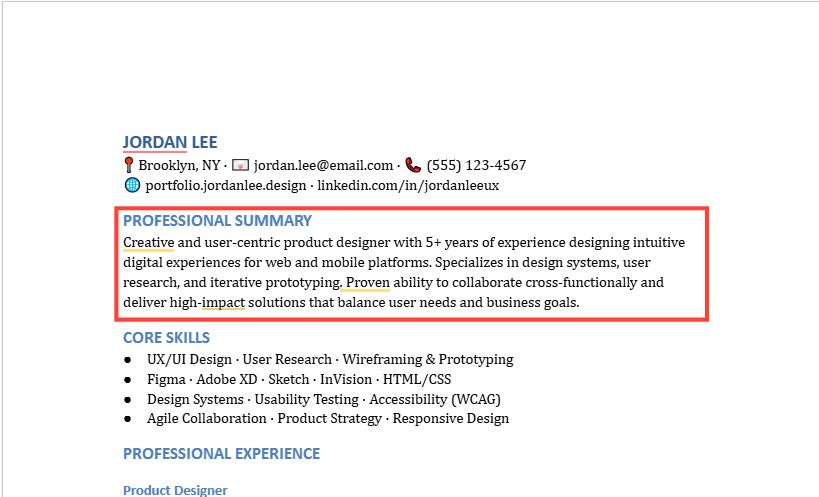
Once you’ve nailed the header, it’s time to set the tone with a brief professional summary.
Think of it as your personal pitch. You’ve got 2–3 lines to tell a hiring manager why they should keep reading. This is not the place for generic statements. Instead, distill your core strengths and professional identity into a few high-impact sentences.
Here’s what that might look like:
“Product designer with 5+ years’ experience building intuitive, scalable design systems for SaaS platforms. Skilled at transforming complex problems into user-focused solutions with measurable outcomes.”
Notice the focus on impact? That’s intentional.
Because here’s the thing: in the U.S. job market, recruiters and hiring managers don’t just want to know what you’ve done—they want to see how it got meaningful results.
3. Highlight Your Skills—But Keep It Real
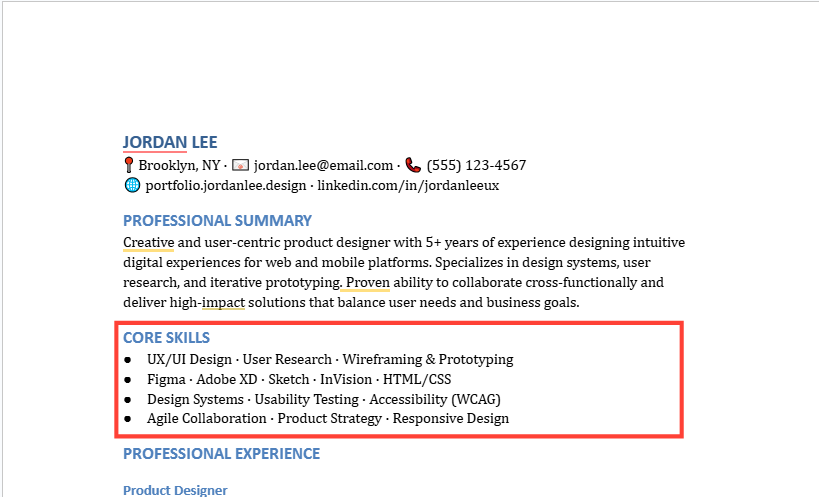
While it can be tempting to list every design tool under the sun, you need to resist the urge. You can focus on the ones you use frequently and are confident about.
Group them in a logical way:
- Design & Prototyping: Figma, Sketch, Adobe XD
- Collaboration: Notion, Jira, Slack
- Testing & Handoff: Maze, Zeplin, Webflow
This layout helps recruiters scan your capabilities quickly—especially helpful when they’re comparing dozens of applicants.
4. Prioritize Outcomes in Your Work Experience

You don’t just list roles and responsibilities. Instead, walk the reader through your contributions using bullet points that show outcomes, not just activities. Use data where possible—conversion rates, user engagement metrics, and even time saved through improved flows. These details demonstrate that you don’t just design—you design with purpose.
For example, instead of writing a vague line like “Worked on e-commerce product page redesign,” which tells the reader little about your impact, you can opt for something more specific and results-driven, such as: “Redesigned e-commerce product page, reducing bounce rate by 28% and increasing average session duration by 1.5 minutes within 6 weeks.”
5. Include Your Education
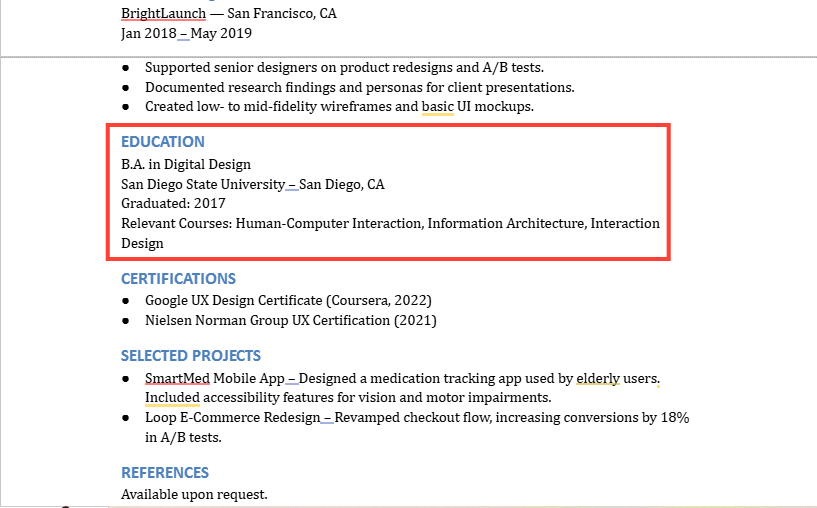
Unless you're fresh out of school, your education shouldn't take center stage. Keep it brief: degree, school, year, and any standout coursework or projects that show off your problem-solving capabilities.
Recruiters value context, so mention if you're self-taught or made a career transition. This helps them understand your journey and appreciate the initiative you've taken to build relevant skills.
6. Show Off Projects That Prove You Can Solve Problems

Whether it's freelance work, side projects, or something you built for fun, include 1–2 key projects that show your design thinking in action. Talk about the challenge, your process, and the outcome. If possible, link to a live version or a detailed case study in your portfolio.
7. Optional sections worth considering
While not always necessary, there are a few additional sections that can help give your CV more personality or depth, depending on your background.
- Certifications
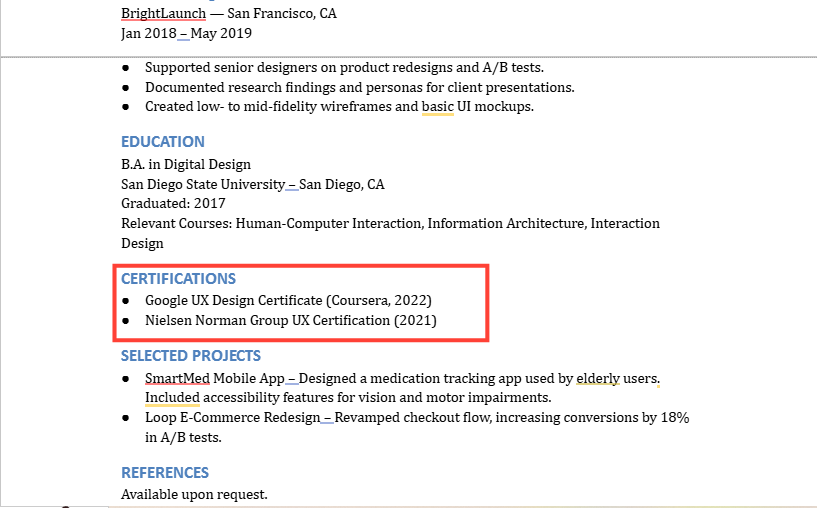
If you’ve completed any relevant UX/UI certifications (Google UX Design, Nielsen Norman Group, etc.), include them—especially if you're self-taught or transitioning careers.
- Awards & Recognition
Got a Behance feature? A design challenge win? Hackathon shoutout? These things show initiative and creativity—highlight them.
- Languages
Especially helpful if you’re applying to globally-minded companies or working in diverse teams.
- Interests
Optional—but this can humanize your CV. Just don’t overdo it. “Rock climbing and generative AI experiments” is more intriguing than “Netflix and hanging out with friends.”
Best Practices for a Winning Software Developer CV
1. Let your personality shine—but subtly
You don’t need to turn your CV into a design playground. While it’s tempting to show off your visual flair, especially as a product designer, readability comes first. Use a clean layout with consistent typography and spacing. Stick to one or two fonts max.
If you're applying for roles in the U.S., minimalism wins. Let your portfolio do the visual heavy lifting. Your CV should guide, not compete.
2. Don’t forget keywords
Many U.S. companies use Applicant Tracking Systems (ATS) to filter candidates. These systems scan resumes for specific keywords before a human even sees it. To beat the bot, echo the language from the job description.
If a job ad mentions “user research,” “design systems,” or “responsive design,” and you have those skills, mirror those exact phrases in your resume. Not forced, but woven naturally into your experience. Think of this as SEO for your career.
Conclusion
Writing a great product designer CV isn’t just about having the right layout or listing the tools you’ve used—it’s about clearly showing the value you bring to the table.
Think of your resume as a mini design project. If you don't keep it clean, easy to follow, and focused on the person reading it, it won’t generate the interest or callbacks you’re hoping for. And don’t just list what you did—highlight the impact you made.
Every part of your CV should have a purpose. So be intentional, be honest, and make it easy for them to see exactly why you’re the right fit for the role.
Image Credit: David Adubiina/Techloy.com





